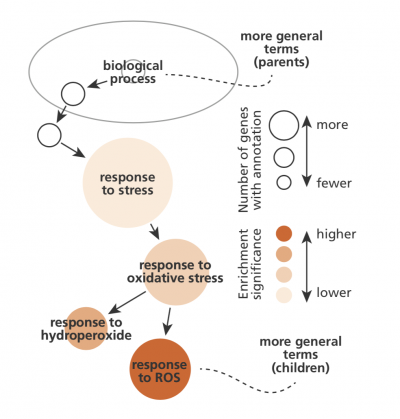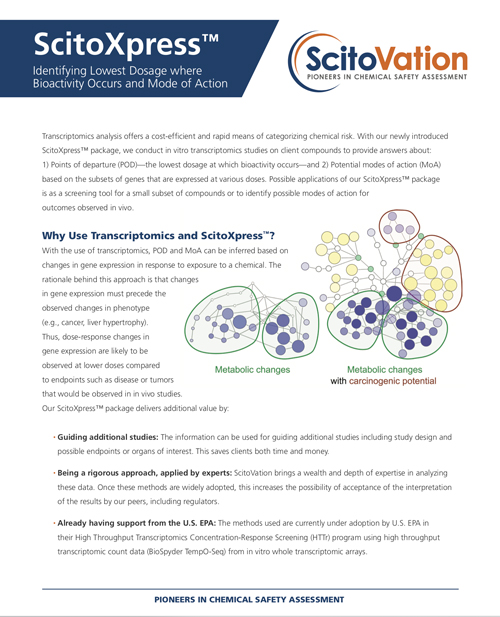Identifying Lowest Dosage where Bioactivity Occurs and Mode of Action
ScitoVation is pleased to introduce the ScitoXpress™ package, enabling us to conduct in vitro transcriptomics studies on client compounds to provide answers about:
- Points of departure (POD)—the lowest dosage at which bioactivity occurs
- Potential modes of action (MoA) based on the subsets of genes that are expressed at various doses
Why Use Transcriptomics and ScitoXpress?
With the use of transcriptomics, POD and MoA can be inferred based on gene response. The rationale behind this approach is that changes in gene expression must precede the observed changes in phenotype (e.g., cancer, liver hypertrophy). Thus, dose-response changes in gene expression are likely to be observed at lower doses compared to endpoints such as disease or tumors that would be observed in in vivo studies. Our ScitoXpress™ package delivers additional value by:
• Guiding additional studies: The information can be used for guiding additional studies including study design and possible endpoints or organs of interest. This saves clients both time and money.
• Being a rigorous approach, applied by experts: ScitoVation brings a wealth and depth of expertise in analyzing these data. Once these methods are widely adopted, this increases the possibility of acceptance of the interpretation of the results by our peers, including regulators.
• Already having support from the U.S. EPA: The methods used are currently under adoption by U.S. EPA in their High Throughput Transcriptomics Concentration-Response Screening (HTTr) program using high throughput transcriptomic count data (BioSPyder TempO-Seq) from in vitro whole transcriptomic arrays.

What’s Provided
The standard output includes the following:
- POD estimate: Doses at which bioactivity are observed
- MoA: Output from our proprietary software tool MoAviz showing subsets of genes that are expressed (see figure)
- A report providing interpretation of the results including hypothesis suggested by the data, limitation of the analysis, and considerations for future studies
- Excel spreadsheet of differentially expressed genes for customers desiring to conduct additional analysis
High-throughput in vitro-to-in vivo extrapolation
For clients interested in relating in vitro-derived dose response to a human- relevant context, we offer the option of collecting additional data to calculate oral equivalent dose corresponding to in vitro concentrations.

